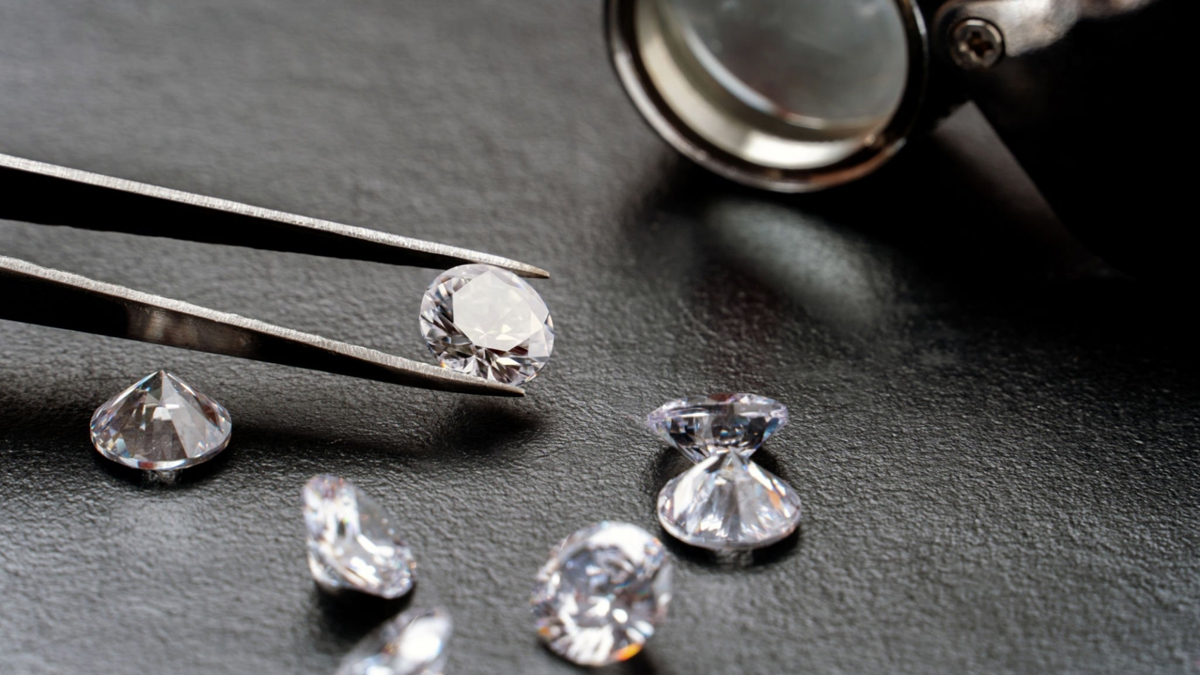The duration of the growth process is significantly influenced by the diamond's size. Larger diamonds may take several months to grow, whereas smaller diamonds can grow rather quickly, often in only a few weeks. To produce lab-grown diamond jewelry with the desired size, quality, and color, the diamond growing process is closely monitored.
The color and clarity of a diamond are two additional factors that influence how long it takes for it to grow. To avoid unwanted dirt, clear diamonds take more time to make because the growth conditions need careful control. Adding new elements to grow colored diamonds, like pink, can slow down their growth rate.
Better diamonds take longer to make because they need to be made in perfect conditions to avoid mistakes. Cheaper diamonds grow faster, but they might have more flaws or a less attractive shape in the end.
Discover how lab grown diamonds are made with HPHT and CVD methods. These scientific procedures create diamonds that are identical to those found in nature. Learn how they mimic natural growth.
CVD vs. HPHT Lab Grown Diamonds
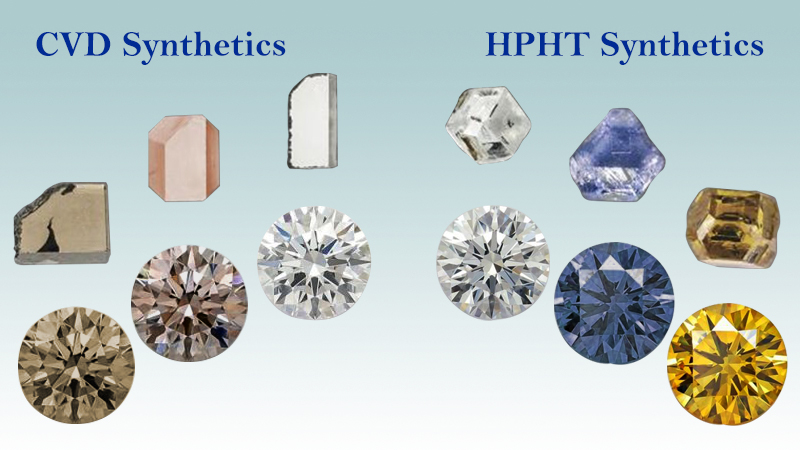
The main difference between an HPHT and CVD diamonds is the process in which the diamonds grow. A diamond expert can tell the difference between HPHT and CVD diamonds by looking closely at their crystal structure.
CVD diamonds are cubic with one growth path, while HPHT diamonds are cuboctahedron-shaped with 14 growth directions. CVD diamonds grow may have small strains, but it's uncommon and only visible with strong magnification.
Lab Grown Diamonds Chemical Vapor Deposition CVD Process
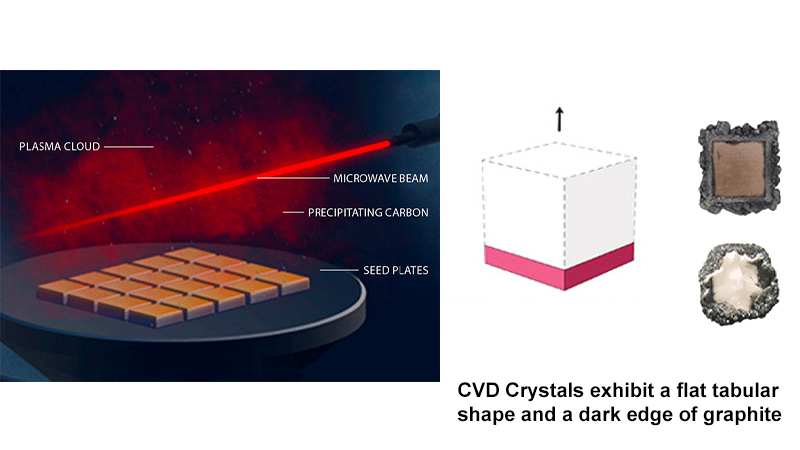
1. 300 microns thick and roughly 10x10mm in size, this diamond slice is very thin. Usually, a diamond slice from an existing lab-created diamond is used.
2. The diamond slice is meticulously cleaned because any flaws will continue to grow through the diamond forms and create inclusions.
3. A vacuum chamber is injected with the diamond slice.
4. The chamber is tightly sealed to prevent the entry of any other gas traces.
5. The chamber is heated to an extremely high temperature and flooded with a carbon-rich gas.
6. Nitrogen can speed up the formation of synthetic diamonds. However, experienced diamond makers avoid this as it can cause the diamond to become yellow.
7. When the gas reacts, it decomposes, coats the diamond slice layer by layer, and bonds to it.
8. Gas fills the chamber for weeks, breaking down and coating the diamond slice, making it heavier.
9. A lab produces a rough diamond that resembles a cube in a square.
10. The rough diamond is shaped using standard polishing methods and laser precision cutting.
11. Certification will be performed on the CVD diamond. Graders like GIA/ IGI evaluate the diamond's cut, color, clarity, and carat weight, among other factors. They also confirm that the diamond was generated in a laboratory using CVD.
Lab-Grown Diamonds High Pressure High Temperature HPHT Process
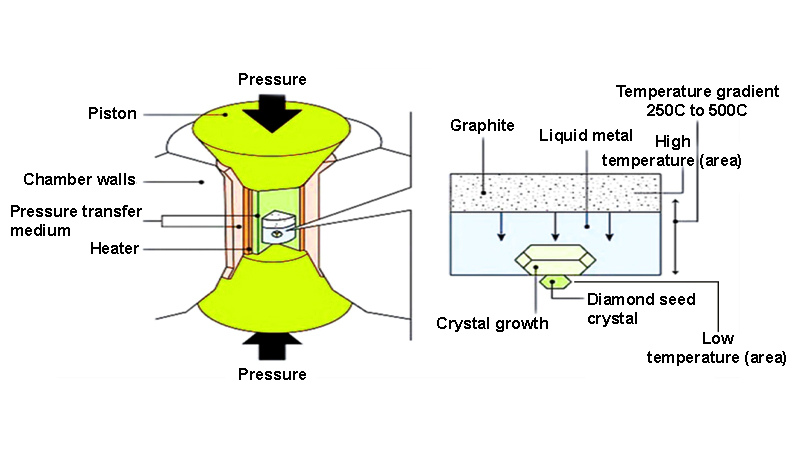
1. A containment cube holds pure carbon, which is typically a small, existing diamond.
2. The cube is squeezed to apply the same pressure that a diamond experiences below the Earth's surface.
3. Electric pulses are used to quickly and intensely heat the cube.
4. The carbon crystallizes because of the heat and pressure.
5. A rough lab diamond is created in just a few weeks, usually within a month.
6. The rough diamond is shaped using standard polishing methods and laser precision cutting.
7. The diamond from HPHT will go through certification. Experts check lab-made diamonds for quality and authenticity using factors like cut, color, clarity, and weight. GIA/IGI are some of the grading organizations.
Are Lab Grown Diamonds Real Diamonds?
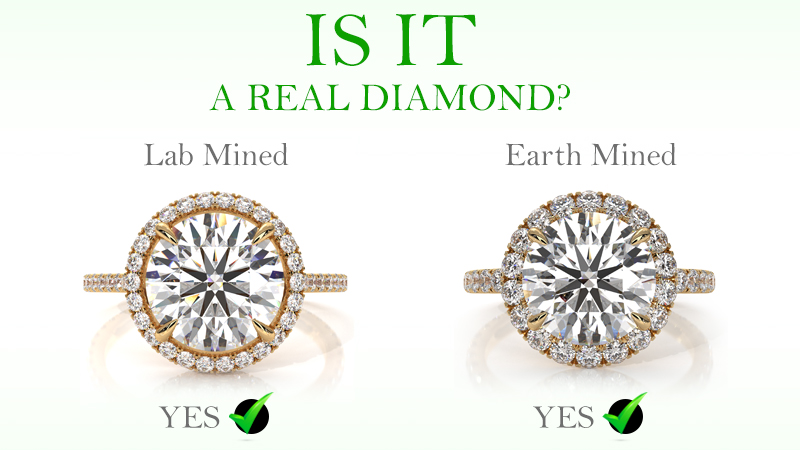
The specialists claim that a natural diamond and a lab-grown diamond cannot be distinguished by normal people. According to Levy, "there are no differences to the naked eye." Scientifically, chemically and physically, and visually speaking, lab-grown diamonds are real diamonds. Only very technical testing can distinguish between naturally occurring and lab-grown diamonds.
It's true when compared to other crystals like moissanite, cubic zirconia and diamond simulants, which are alternatives to diamonds. These crystals are not lab-grown diamonds and should only be used as a substitute for diamonds.
How Long Do Lab Grown Diamonds Last?
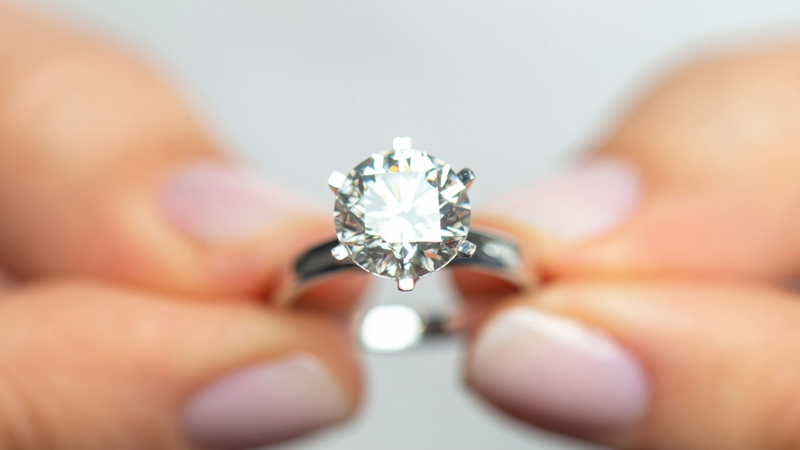
The durability of lab-grown diamonds extends beyond just their inherent qualities and includes their aesthetic value. Man-made diamonds stay shiny and sparkly forever because they're made of the same stuff as real diamonds. Lab-grown diamonds are great for family heirloom jewelry. They sparkle and stay shiny for many years.
Lab-grown diamonds last a long time and are good for everyday wear because they don't lose their shine easily. Man-made diamonds are beautiful and valuable for engagement rings, wedding bands, and fine jewelry.
To keep your lab-made diamond jewelry looking good and lasting long, be careful. Take it off when doing hard things or using chemicals.
Conclusion
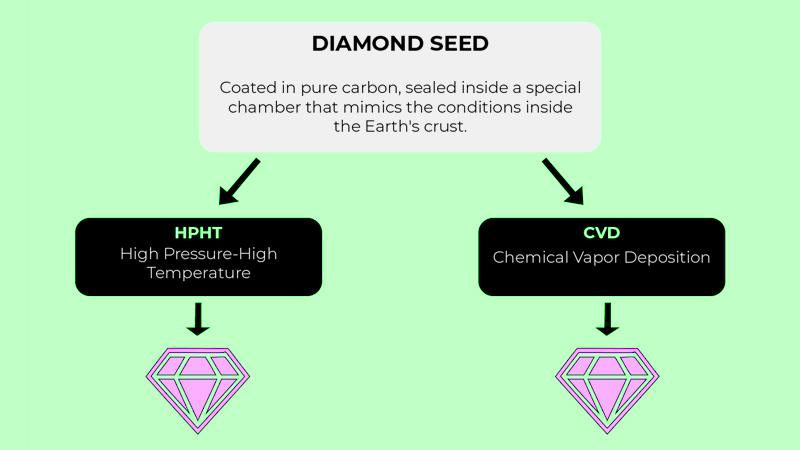
The typical formation time for lab-grown diamonds are grown is one to two weeks. Diamonds take millions of years to form naturally, but the process to make them is much faster.
Most professionals agree that HPHT diamonds are of higher quality than CVD diamonds. Due to their rapid growth, CVD diamonds can develop graining and unusual internal markings.
CVD diamonds need treatment after growing to look better. They can have brown colors undertones when made. Diamonds generated using HPHT are often of a higher quality and don't require post-growth treatment.

